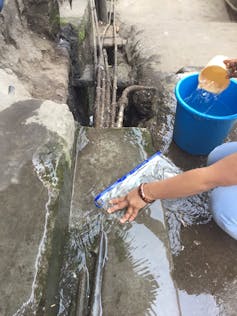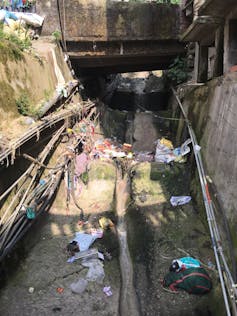Decolonising our sewerage systems: Matt Barlow
GUEST OBSERVER
Two current global trends are set to make life rather uncomfortable for cities: climate change and the unprecedented rate of urbanisation.
This combination of extreme weather – often involving sudden deluges of water – and high population density will test even the best sewage infrastructure we have today. In the face of such pressures, how adaptable are our sewage systems?
Colonial heritage in our sewage systems
Sewage systems worldwide commonly consist of flush toilets and pipes that rely on a steady supply of water to transport and deposit bodily waste, either to a wastewater treatment plant or, failing that, simply downstream in the nearest river or straight into the ocean.
Many urbanites around the globe are using sewage systems based on a colonial-era template. Initially implemented to cure London’s “Great Stink” of 1858, when a hot summer combined with the excrement-filled River Thames to create an unbearable stench, sewer systems were public health interventions designed to remove pathogens and “miasmatic” offences associated with bodily waste.
They were first transplanted off Britain’s shores in the reconstruction of Paris from 1850–70, and since then have become embedded culture-specific notions of hygiene and sanitation around the globe.
Such colonial infrastructure is now proving increasingly problematic in the face of human-driven global trends (broadly referred to as the Anthropocene).
Using water to flush waste
A paradox of climate change is that there seems to be both more and less water. In South Asia, for example, at least 1.6 billion people struggle to find drinking water despite an abundance of water generally.

A woman siphoning water from a leaky pipe into a bucket on the side of the road during summer. Author provided
For residents of Darjeeling, India, where I am currently conducting my PhD fieldwork, this paradox is very real. Monsoons in Darjeeling last from June through August, sometimes longer, and rain falls frequently throughout the rest of the year. On the face of it, Darjeeling should have plenty of water, but in fact it faces increasingly acute shortages during the summer months from April to June.
The town’s water and waste infrastructure was built by the British in the 1930s, for what was then a population of 10,000. Its population now hovers around the 150,000 mark, and surges to more than 200,000 during peak tourist season from March to May. Despite this, there has been little to no official maintenance or upgrade since Indian independence in 1947.
In town, signs that urbanisation has outpaced infrastructure capacity are everywhere. An impressive number of pipes move water to and from the population. Along with electricity wires, these pipes traverse the city along increasingly bizarre and precarious routes. Ad hoc retrofit attempts to meet rising demand appear to be band-aid solutions and, because the pipes leak, often exacerbate contamination.

A typical open sewer in Darjeeling. Note the pipes on either side are water pipes taking drinking water to homes. Author provided
Darjeeling is instructive because it is a landscape struggling with inadequate infrastructure amid a rapidly urbanising population. In such a landscape, fresh water can be contaminated by sewage outflows, largely because the system is completely dependent on water to function.
Such over-reliance underpins another paradox: modern sewerage systems require water to work and yet, if not context-sensitive nor managed appropriately, can dirty vital waterways.
Closer to home
Australia is not immune to such problems. Our changing climate means we too face more severe droughts along with heavier rainfall events. Under these conditions, our sewage systems are under increasing stress.
Earlier this year Melbourne experienced summer flash floods which strained the city’s sewage systems, contaminating three public beaches. In February a heavy downpour in Western Australia caused concern over sewage contamination in the Swan River.
Such experiences are not isolated, and are likely to increase in incidence across the world. They provide important lessons and act as a catalyst for rethinking our relationship to water and waste, particularly amid concerns over water scarcity and extreme weather conditions in southern Australia.
Alternative futures
Many social scientists are now researching alternative forms of infrastructure that are contextually relevant, embedded in community values, and adaptable to current environmental challenges.
These alternative forms include moves to re-examine our relationship with waste in farming, use dry composting toilets, and install public bio-toilets along India’s main railway corridors.
![]() As for my home town of Adelaide, the capital of the driest state on the driest inhabited continent on Earth, should we really continue to use water to flush bodily waste?
As for my home town of Adelaide, the capital of the driest state on the driest inhabited continent on Earth, should we really continue to use water to flush bodily waste?
Matt Barlow works at University of Adelaide.
This article was originally published on The Conversation. Read the original article.
